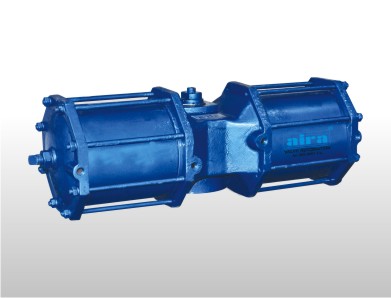Rotary actuators are devices that provide linear or rotary motion to a load. They are used in a variety of applications, including automotive, aerospace, and manufacturing. There are several types of rotary actuators, each with advantages and disadvantages. This blog post will look at the different rotary actuators used in India.
Basic types of rotary actuators
A rotary actuator is a device that produces linear motion from a rotating input. It typically consists of a housing, an input shaft, and an output shaft. The input shaft is connected to a power source, such as an electric motor, and the output shaft is connected to the load.
There are two main types of rotary actuators: pneumatic and hydraulic. Pneumatic actuators use air pressure to generate linear motion, while hydraulic actuators use fluid pressure. Each type has its advantages and disadvantages.
Pneumatic actuators are typically more potent than hydraulic actuators but are also more expensive. Hydraulic actuators are less powerful but less expensive. Pneumatic actuators are also more challenging to control than hydraulic actuators.
The most common type of rotary actuator used in India is the pneumatic type. Pneumatic rotary actuators are used in various applications, such as automotive assembly lines and machine tools.
Pneumatic rotary actuators
A rotary actuator India is a device that uses linear motion to produce a rotating force. They are commonly used in industrial applications where there is a need to convert linear motion into rotary motion or vice versa.
Pneumatic rotary actuators are one type of rotary actuator that uses compressed air to generate the necessary force. They are often used in applications with high torque, such as automotive and aerospace industries.
Pneumatic rotary actuators typically consist of a housing, an air cylinder, and a piston. The air cylinder contains the compressed air that will be used to generate the force, while the piston is connected to the housing and converts the linear motion of the air into rotary motion.
There are several benefits to using pneumatic rotary actuators over other types of actuators. One advantage is that they can be used in environments with a risk of explosion, as they do not use combustible materials. Another benefit is that they are relatively low maintenance and easy to repair if they break down.
Drawbacks of pneumatic rotary actuators include the fact that they require a constant supply of compressed air, which can be expensive, and they can also be noisy.
Hydraulic rotary actuators
Hydraulic rotary actuators use hydraulic fluid to generate a rotating force. They typically consist of a housing, a hydraulic cylinder, and a piston and use the pressure of the hydraulic fluid to develop the necessary power.
Hydraulic rotary actuators have several benefits, including generating very high levels of force and relatively low maintenance. However, they also have some drawbacks, such as requiring a constant supply of hydraulic fluid.
Electric rotary actuators
Electric rotary actuators use electrical current to generate a rotating force. They typically consist of a housing, an electric motor, and a gearbox and use the torque generated by the electric motor to rotate the output shaft.
Electric rotary actuators have several benefits, including the fact that they can be used in environments with a risk of explosion and relatively low maintenance. However, they also have some drawbacks, such as requiring a constant supply of electrical power.
Gas spring rotary actuators
Gas spring rotary actuators use a gas spring to generate a rotating force. They typically consist of a housing, a gas spring, and a piston and use the pressure of the gas spring to develop the necessary power.
Gas spring rotary actuators have several benefits, including the fact that they can be used in environments with a risk of explosion and relatively low maintenance. However, they also have some drawbacks, such as requiring a constant supply of compressed air.
Low-cost rotary actuators
There are many types of low-cost rotary actuators available on the market today. Some of the most popular include pneumatic, hydraulic, electric, and gas spring rotary actuators. Each type has its unique benefits and drawbacks, so choosing the right one for your specific application is essential.
Pneumatic rotary actuators are a popular choice for many applications because they are relatively low-cost and easy to maintain. However, they require a constant supply of compressed air, which can be a drawback in some situations. Hydraulic rotary actuators are another popular choice because they can generate high levels of force. However, they also require a constant supply of hydraulic fluid, which can be a drawback in some situations.
Electric rotary actuators are a good choice for many applications because they are relatively low-cost and easy to maintain. However, they require a constant supply of electrical power, which can be a drawback in some situations. Gas spring rotary actuators are another excellent choice for many applications because they are relatively low-cost and easy to maintain. However, they require a constant supply of compressed air, which can be a drawback in some situations.

